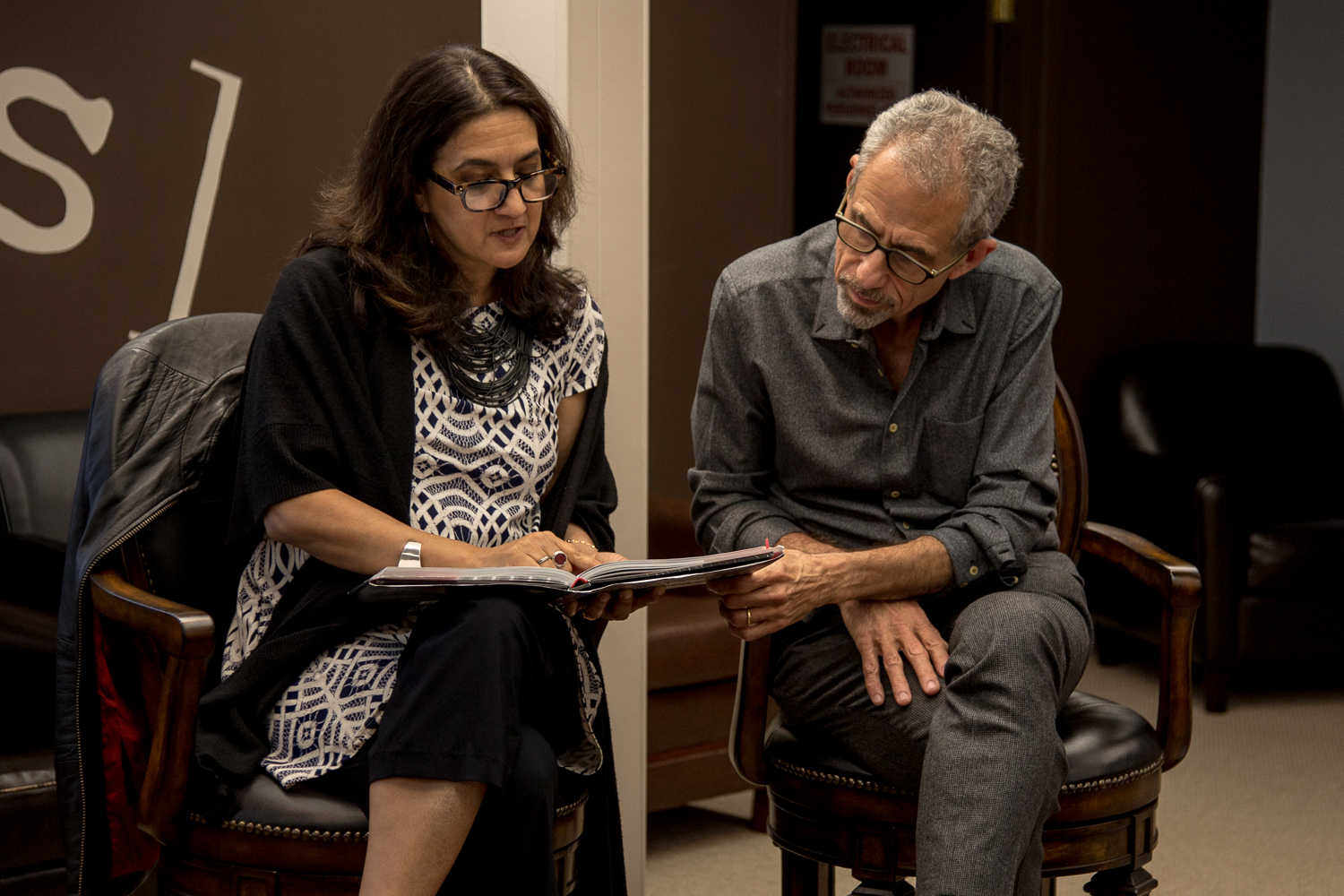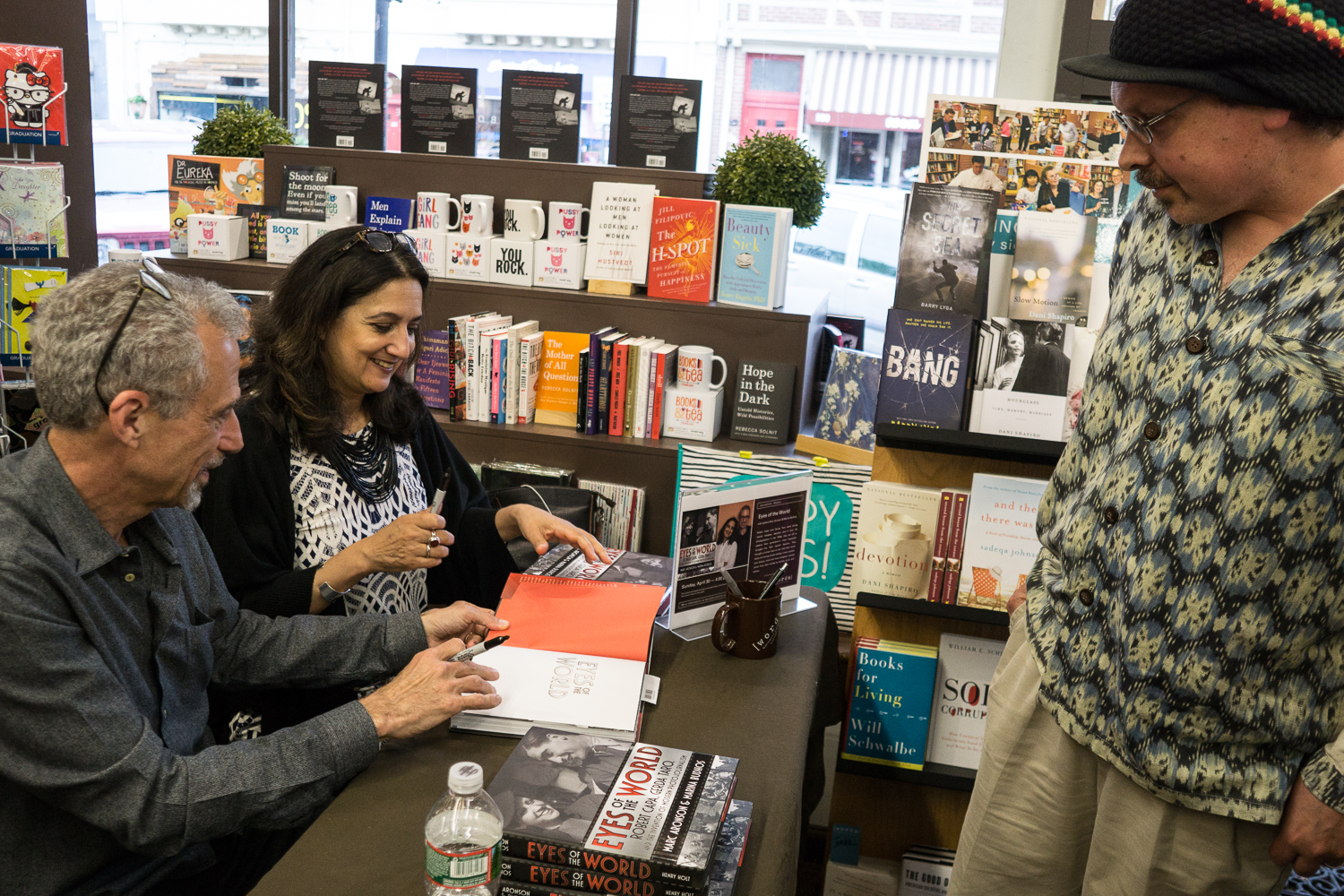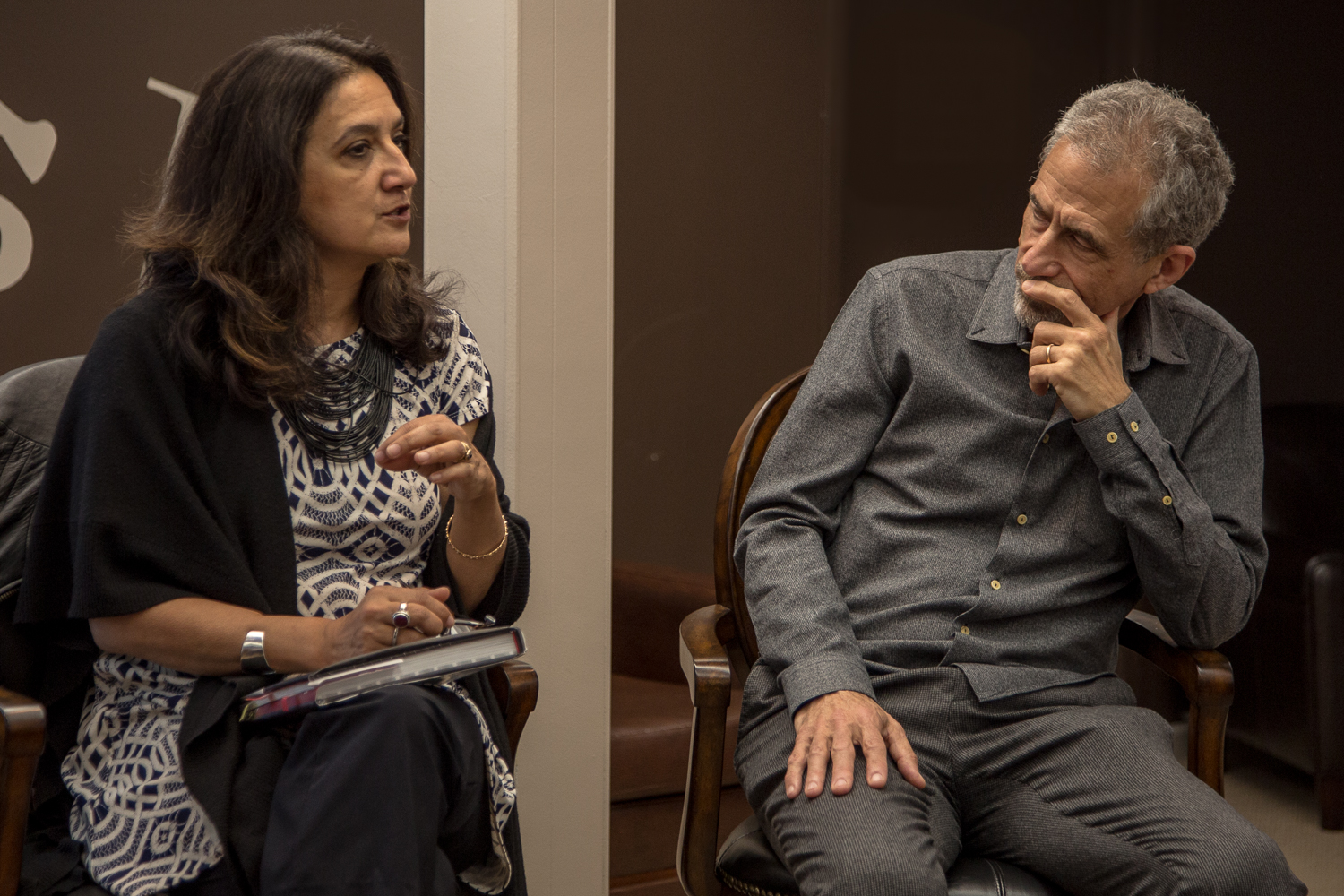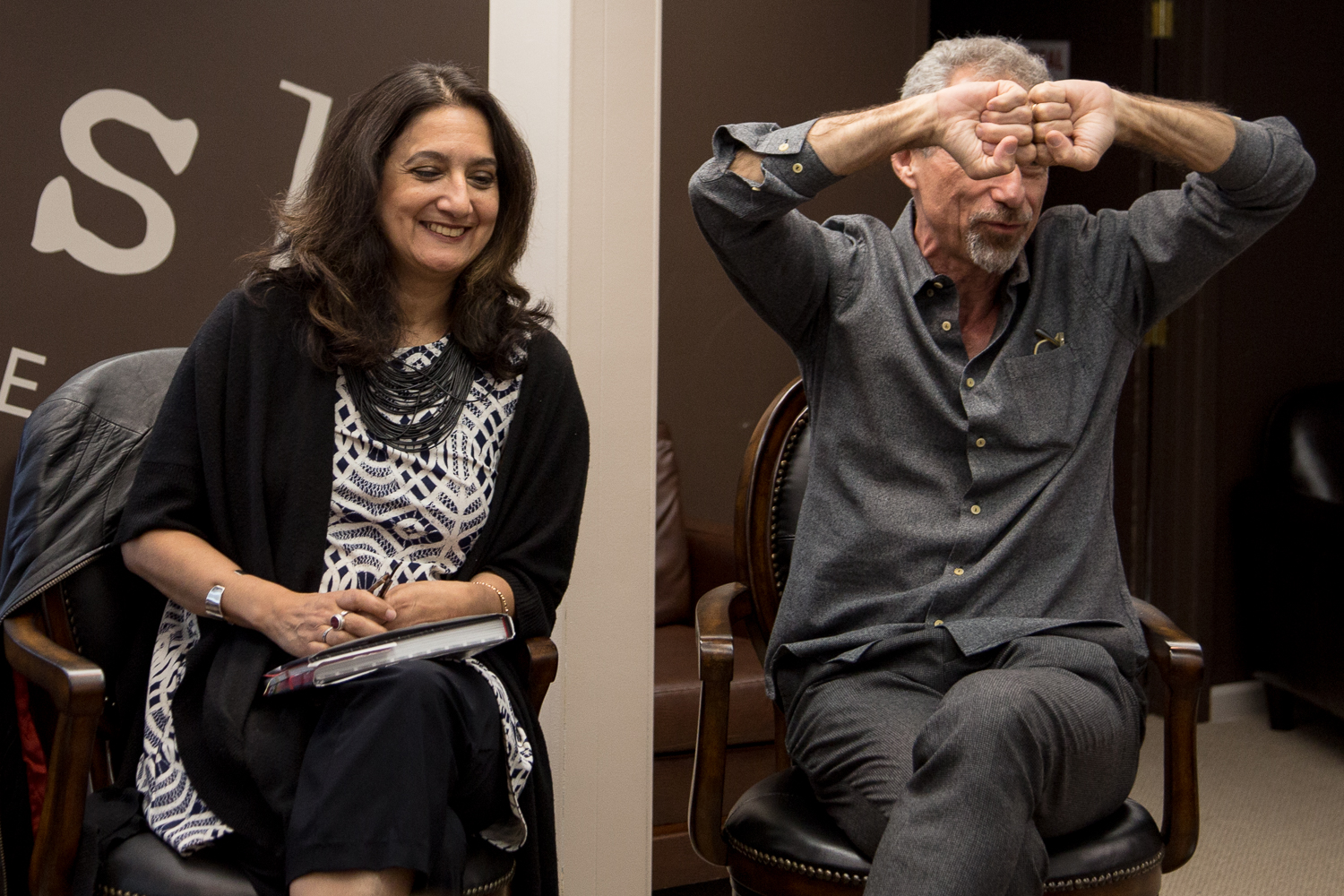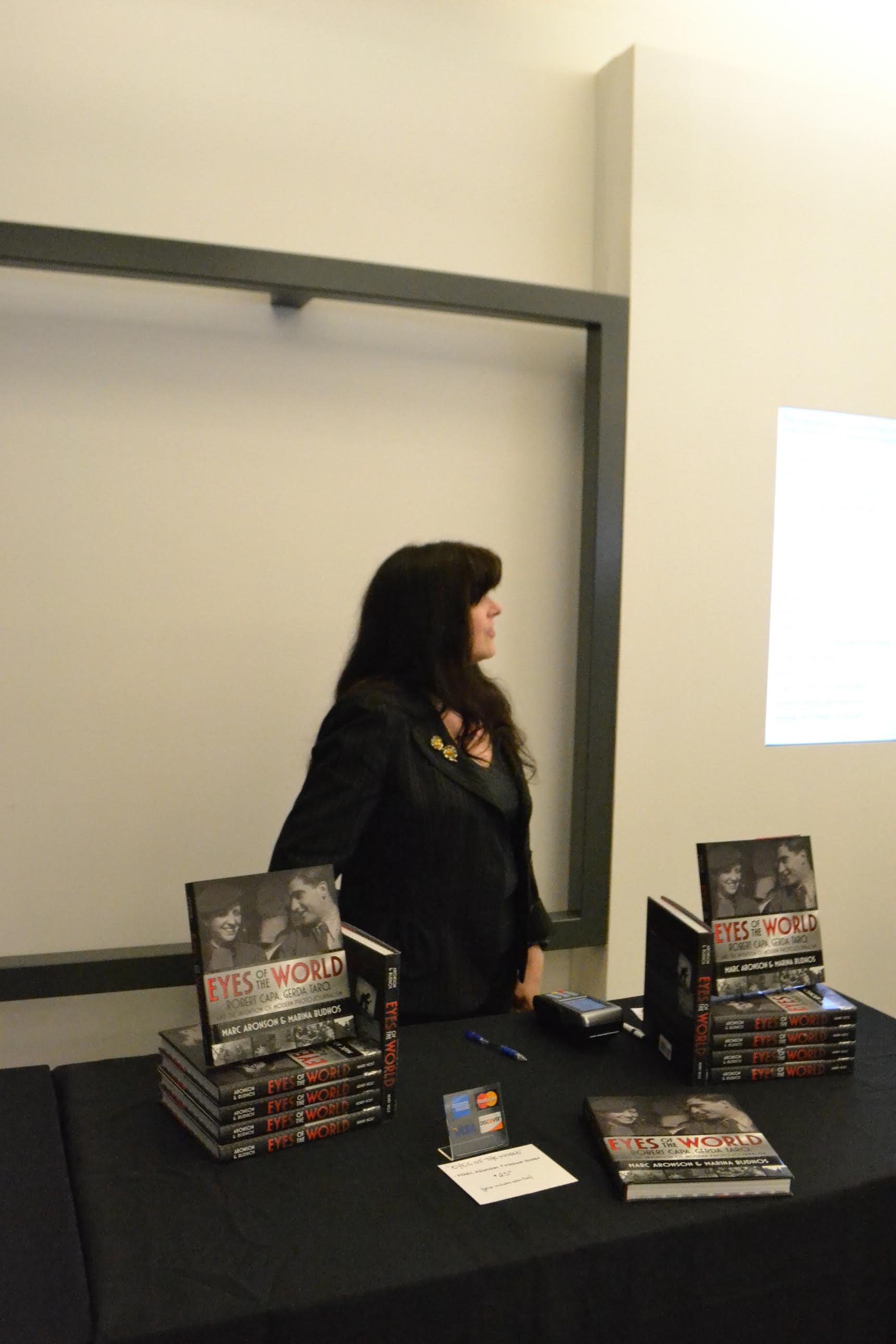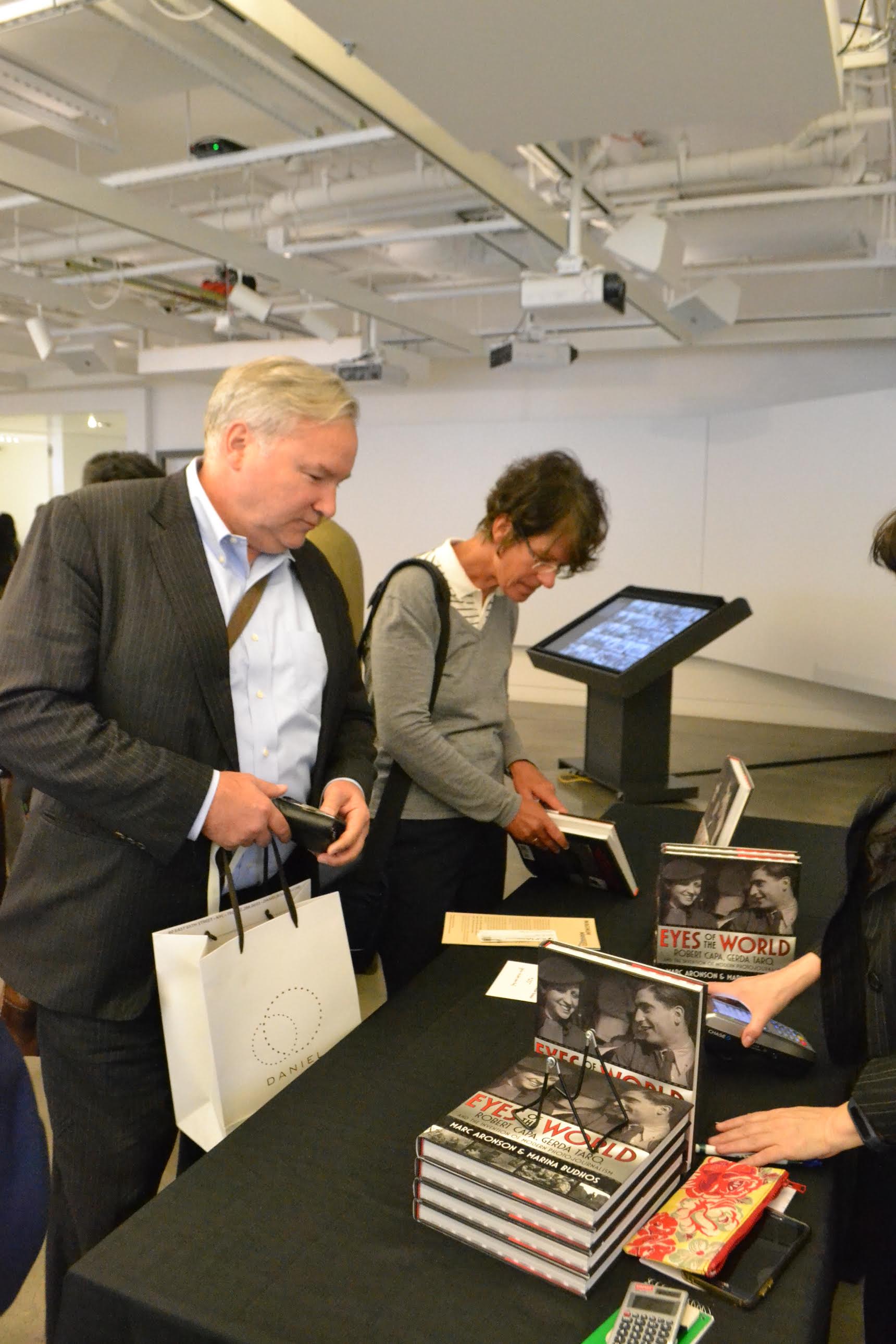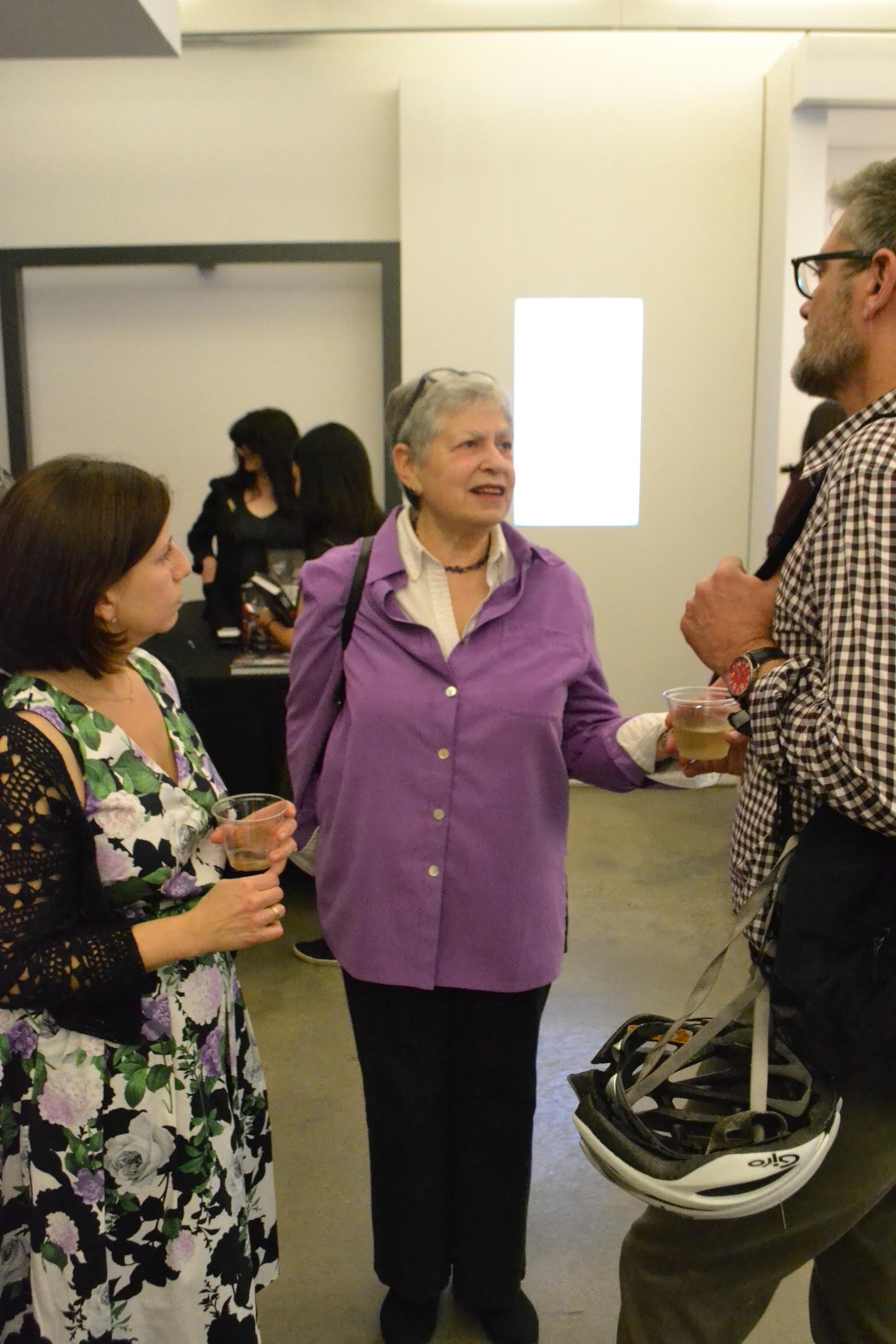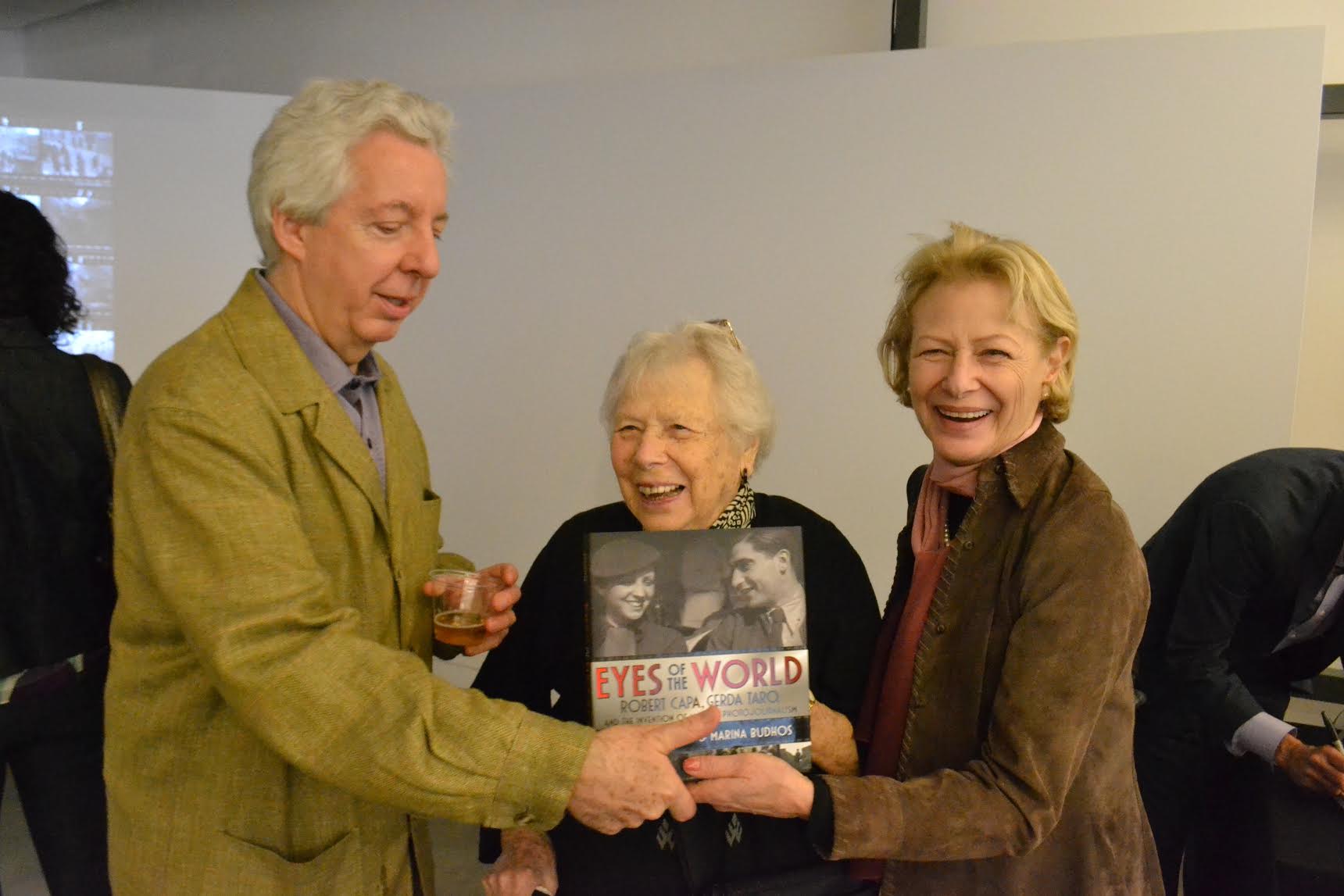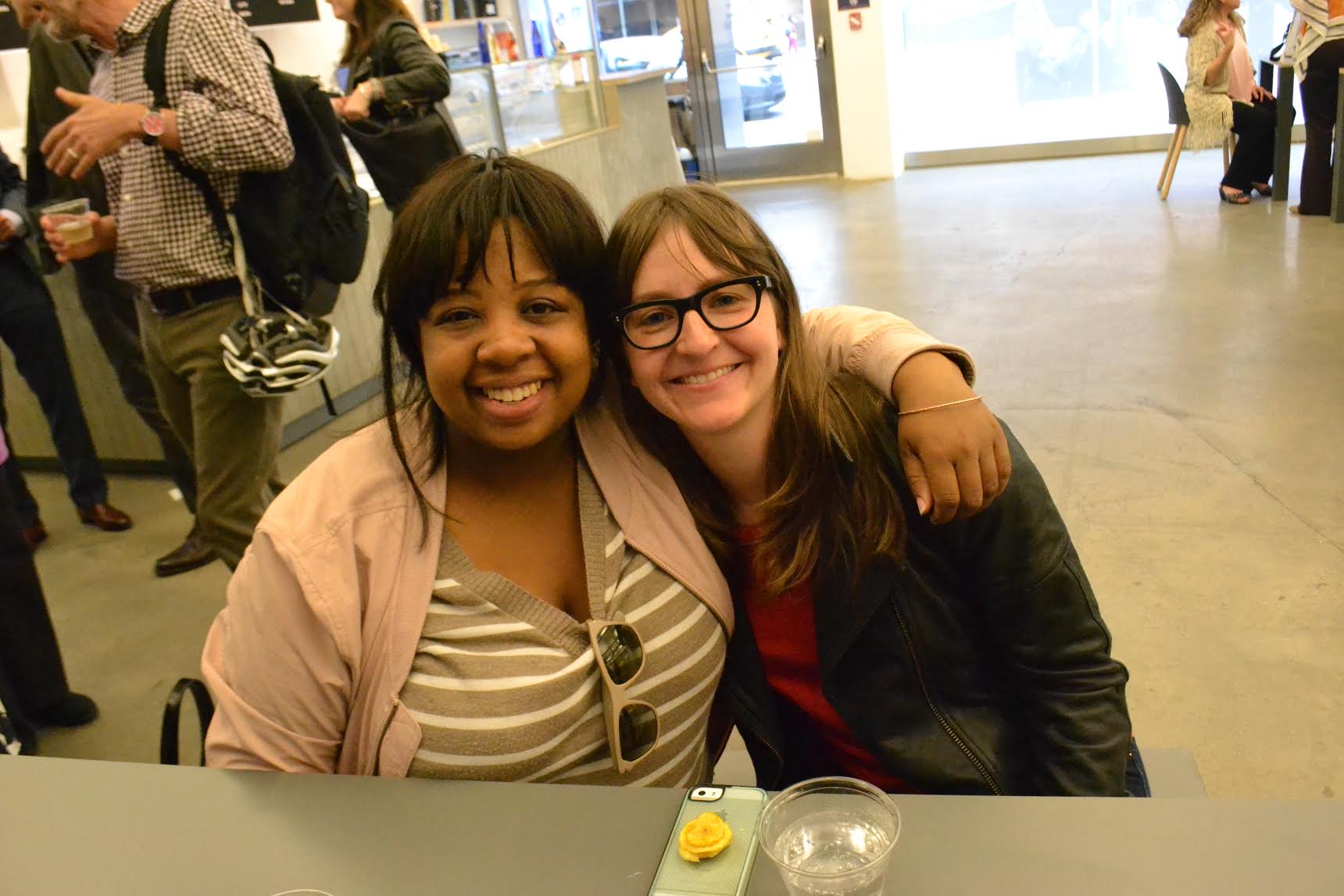ROBERT CAPA, GERDA TARO & THE INVENTION OF MODERN PHOTOJOURNALISM
co-authored with Marc Aronson

Finalist, YALSA Nonfiction Award
Best of 2017, Washington Post
Best of 2017, The Horn Book
Best Teen Books, Kirkus Reviews
Best of 2017, School Library Journal
Booklist Editor’s Choice, 2017
Best of 2017, Chicago Public Library
The Best Children’s Books, 2017 Tablet
Best & Brightest Books 2017, Denver Public Library

* * *
Robert Capa and Gerda Taro were young Jewish refugees, idealistic and in love. As photographers, they set off to capture their generation’s most important struggle—the fight against fascism. Among the first to depict modern warfare, Capa and Taro took powerful photographs of the Spanish Civil War that went straight from the devastation to news magazines. In so doing, they helped birth to the idea of bearing witness with technology, bringing home tragedies from across the world.
Packed with dramatic photos, posters, and maps, this compelling book captures the fascinating story of how photojournalism began.
****
Visit the icp.org to view a collection of many of the photographs published in Eyes of the World.
Read an excerpt in TIME Magazine.
Order on Amazon, Barnes & Noble.com or pick up a copy at your local bookstore.
Teachers: A curriculum guide is now available for Eyes of the World
Interested in a review copy or in an event around Eyes of the World?
Contact: Erin Cox at erinlcox@gmail.com.
***
From our NJ Book Launch at the WORDS Bookstore in Maplewood
***
From our NYC Book Launch at the International Center for Photography Museum
***
Tablet: “Eyes of the World is an education, but it’s also a love story…and a moral imperative: Don’t look away from injustice.”
“Eyes of the World captures an extraordinary–and tragic–moment in time. Robert Capa and Gerda Taro were young, idealistic, in love, and two of the best photographers who ever lived. This book does a great service for readers of all ages by evoking that moment, telling the story of this couple so well.” –Adam Hochschild, author of Spain in Our Hearts: Americans in the Spanish Civil War, 1936-1039
★ Starred Review from The Horn Book: “This passionate, sprawling, multilayered biography begins like a Robert Capa photograph: right in the middle of the action. Readers are thrust into the D-Day landing, with all the terror, fatigue, bloodshed, and danger of that harrowing day as Capa photographs the Normandy Invasion.”
★ Starred Review from Kirkus: “Going beyond details of the two lives, the complex account also explores issues surrounding refugees of war, the relationship between journalists and soldiers, the nature of artistic collaboration, and the overlap of photojournalism and propaganda.”
Publisher’s Weekly: “Collaborating as their subjects did, Aronson and Budhos (Sugar Changed the World) vividly and intimately recount the story of pioneering war photojournalists Robert Capa (1913–1954) and Gerda Taro (1910–1937).”
★ Starred Review, VOYA: “Aronson and Budhos do a phenomenal job bringing the Spanish Civil War to life through the eyes of two young photojournalists, Robert Capa and Gerda Taro … Even in today’s world of Facebook and social media, Aronson and Budhos add unique commentary on how these two budding photojournalists, teens at the time, sacrificed everything for a cause they believed in to bring the world images from the front to help fight against fascism.”
★ Starred Review, Booklist: “Rather ambitiously, Aronson and Budhos address the escalating tensions between socialist and fascist regimes, the emergence of photographic news magazines and compact cameras, and the lives of Capa and Taro into one seamless discussion.”
BCCB: “This is a must-have purchase for high school libraries, and it may also be a surprise hit among readers of wartime adventure.”
Review, Project Muse: “In this dual biography of these pioneers, Aronson and Budhos offer a title that can be enjoyed by audiences of varied interests. “
Review, Electric Literature: “While Donald Trump and his administration play loose with facts and figures, a substantial number of authors and illustrators are presenting American history to students in all of its gory, complicated, and fascinating glory.”
Washington Post: “Packed with compelling images and ideas, Eyes of the World: Robert Capa, Gerda Taro and the Invention of Modern Photojournalism (Henry Holt, ages 12 and up) explains how two remarkable people documented the Spanish Civil War for the rest of the world to see…’Eyes of the World’ will help a new generation appreciate the couple’s restless tenacity.”
An interview with Wired New Jersey:
* * *
ARTICLES
School Library Journal
Guest Blog by Marc
“Marina and I have just published Eyes of the World: Robert Capa, Gerda Taro and the Invention of Modern Photojournalism (Holt, 2017). Recounting the desperate, tragic, heroic lives of Capa and Taro we (along with our brilliant designer April Ward and devoted editor Sally Doherty) needed to consider every page and page turn as textual description interwoven with visual narration. This required three separate processes: first, we wrote the main text – which needed to work entirely on its own, as propulsive narrative. But in order to write the book, we immersed ourselves in Capa’s and Taro’s contact sheets, prints, and magazine layouts – living in their sequences of shots (the two-volume Mexican Suitcase book published by the International Center of Photography is invaluable for those who want that deep dive). Images and sequences of images thus inspired words.
Second, we had to locate and select every image that we wanted to show – we had resolved the rights issues, but we still needed to find who had each image (this was not always clear, even to the rights-holders). Third, came the real challenge: designing each page, page-turn, and chapter so image plus text would have the right pace – chapters were by turns romantic, hectic, celebratory, cinematic, meditative, bellicose, tragic, triumphant and, finally both culminating and inspirational– leading from the story we’d told to now, the present, the future.”
“The Siege of Madrid Through Photographs”, The History Reader, by Marc Aronson & Marina Budhos
“ON THE LEFT BANK of the Manzanares River , the scrub grass is stiff with frost. Capa, Regler, and an officer peer across the water, trying to make out the enemy’s position. The three are in the northwest corner of the city, in a group of farm buildings belonging to the agricultural school in University City. Franco’s troops have already crossed the river on footbridges, stationed themselves in the School of Architecture, and are now in a large manor, the Palacio de la Moncloa. This stretch of campus is no-man’s-land. Somewhere in these abandoned horse stables and granaries, the invisible enemy lies in wait. Capa follows the men into rooms fortified with sandbags, then through an old slaughterhouse, where the soldiers tilt their rifles through broken patches in the wall.
A scout arrives to tell them that Moroccans are on the top floor of a barn, shooting through holes in the floor and killing government soldiers. Suddenly, a burst of shelling breaks out, and the three men dive to the ground. Bullets whistle and screech overhead. “You’ve got me trapped by the Moors!” Capa shouts, half-frightened, half-joking to Regler.
When the shooting stops and the three men get up, a shaken Capa asks to pause, having soiled his pants. “My intestines were not so brave as my camera,” he jokes.”
* * *
EXCERPT
Imagine: you are young. You have nothing. There have been times when Andre has fled an enraged landlady for not paying the rent, run into the night, leaving his shoes, his belongings behind. He travels light. He is always looking ahead for the next chance, the next opportunity, to make himself anew. Gerta too is a gambler. They are fanciful dreamers—not just for politics—but for themselves. They want to ‘make it’ in Paris.
And there is one big way they can make their luck change: their names.
No one knows exactly who decided on the name change, but bets are on the canny Gerta, with her eye for style and illusion. Together they come up with a scheme to help land more lucrative photography jobs: Gerta will pretend she is trying to sell the photographs of this famous and rich American photographer named Robert Capa, who will offer his images for no less than 150 francs. She too will change her name—Gerta Porhylle will become Gerda Taro—fascinatingly similar to Greta Garbo. Their new names give them an alluring, glamorous air. As Capa writes his mother about his new name, “One could almost say that I’ve been born again, but this time it didn’t cause anyone any pain.”
There is another side to their name change. With anti-Semitism on the rise, and living as foreigners in a city that is hostile to them, it is better to take on a name one that does not root them in any particular nation, religion, or identity. Their new names are a disguise, a protection, “a farewell to any fixed point in the world, to any country.”
It is a daring move. Every time someone asks to meet the elusive Robert Capa, Gerda hedges her bets, says he is busy traveling, and offering to send his dark-haired assistant “Andre” instead.
And it works. “Capa” now lands more assignments—he travels to Geneva to cover a special session of the League of Nations, where Haile Selassie, the Emperor of Ethiopia, will make a special plea for his country. While there, he happens upon a Spaniard who is wrongly dragged away by the police. Capa’s photos become a sensation, as they symbolizes the muzzling of voices in an increasingly intolerant Europe.
There is one editor, however, who is not fooled by the ruse of Robert Capa: Lucien Vogel, who runs Vu, an influential Left magazine, a prominent figure in magazines, and married to the editor of Vogue magazine. Known for his elegant, British tweed jackets and silk neck scarves, the dapper Vogel telephones Gerda, saying, “Tell that ridiculous boy Friedmann, who goes around shooting pictures in a dirty leather jacket to come see me.”
When Capa arrives at Vogel’s fancy estate, the two men take a walk on the big lawn—a test apparently of whether the regal editor will approve of the young man. By the time they return to the house, Vogel has agreed to publish some of Capa’s photos.
The names Capa and Taro stick.
* * *
INSPIRATIONS & BACKGROUND

A few summers ago, while sitting at lunch at the Vermont MFA program, chatting with many veteran children’s book authors such as Walter Dean Myers, Leda Schubert, I was suddenly thunderstruck with inspiration: I knew what my next young adult nonfiction book would be—the story of photographer Robert Capa, the less-known Gerda Taro, and their friend Chim, as they set off to photograph the Spanish Civil War and create modern photojournalism—and war journalism—as we know it today. Nothing like the company of other authors, bubbling with their own ideas, to set one going.
Indeed, given that this is very much a story of a man and a woman collaborating—as equals, as compadres, as artists—it seemed the perfect next book for Marc and I to write. We had been casting about for a new idea and had touched on the idea of collaboration—various duets in history that have joined forces to create something they could not do on their own.
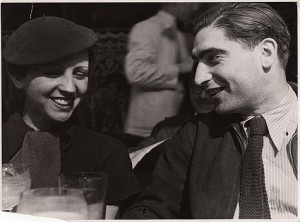 The story of Capa and Taro had caught my eye a few years ago when I went to an exhibition at the International Center for Photography—“This is War!”—a huge retrospective of Capa’s work. I’d always been fascinated with the Magnum photographers, and fell in love with those images from the Spanish Civil War–the molded, strong faces staring up at a sky strafed with war planes; children playing see saw amidst rubbled buildings. At that exhibition, I became acquainted with Taro’s work, which also shared a smaller exhibition space. I learned that in fact she and Capa were an artistic team—Capa & Taro—and they had gone off together, as lovers, as friends, as co-conspirators in the aim of telling the world about the Republican cause. Like so many of their generation, they believed that the Spanish Civil War was the war to stake a claim—that if it was not won—Europe would surely fall to fascism. (And of course they were right in this regard) Armed with their new, lightweight Leicas and Rolloflexes, they set off, arriving in Barcelona on August 5th, 1936. Sadly, Taro would not live more than a year, as she was killed during the Battle of Brunete in July, 1937. This is one of the reasons her work is not as well known—she died very young, just as she was emerging as a daring and canny photojournalist in her own right.
The story of Capa and Taro had caught my eye a few years ago when I went to an exhibition at the International Center for Photography—“This is War!”—a huge retrospective of Capa’s work. I’d always been fascinated with the Magnum photographers, and fell in love with those images from the Spanish Civil War–the molded, strong faces staring up at a sky strafed with war planes; children playing see saw amidst rubbled buildings. At that exhibition, I became acquainted with Taro’s work, which also shared a smaller exhibition space. I learned that in fact she and Capa were an artistic team—Capa & Taro—and they had gone off together, as lovers, as friends, as co-conspirators in the aim of telling the world about the Republican cause. Like so many of their generation, they believed that the Spanish Civil War was the war to stake a claim—that if it was not won—Europe would surely fall to fascism. (And of course they were right in this regard) Armed with their new, lightweight Leicas and Rolloflexes, they set off, arriving in Barcelona on August 5th, 1936. Sadly, Taro would not live more than a year, as she was killed during the Battle of Brunete in July, 1937. This is one of the reasons her work is not as well known—she died very young, just as she was emerging as a daring and canny photojournalist in her own right.
***

On August 5th, 2012, Marc, myself and our two boys, Sasha and Rafi flew to Barcelona—exactly 76 years after Capa and Taro when arrived to begin their photo-journey into the Spanish Civil War. Within a few months, Capa would become a world-famous war journalist. Both would reinvent modern photojournalism as we know it today. And in less than a year, the daring Taro would be dead.
We spent nearly three weeks in Spain, tracking, as best we could, some of the key sites and in some cases, visiting some of the exact locales where they shot photographs. Our last research day was in Brunete, where Taro was sideswiped by a swerving tank, and ultimately died in a hospital 30 kilometers away.
***
